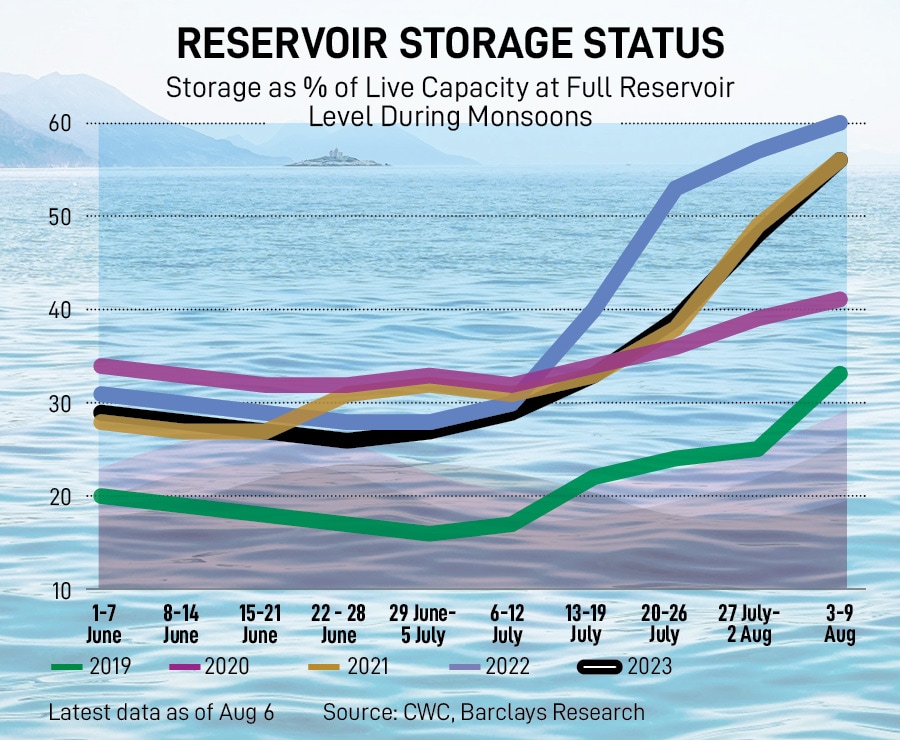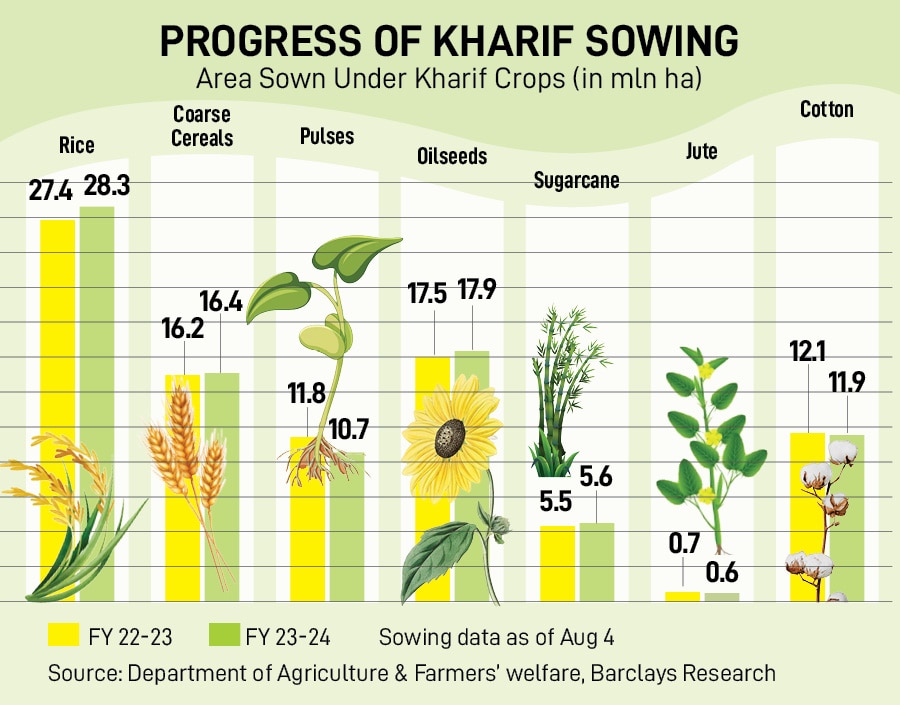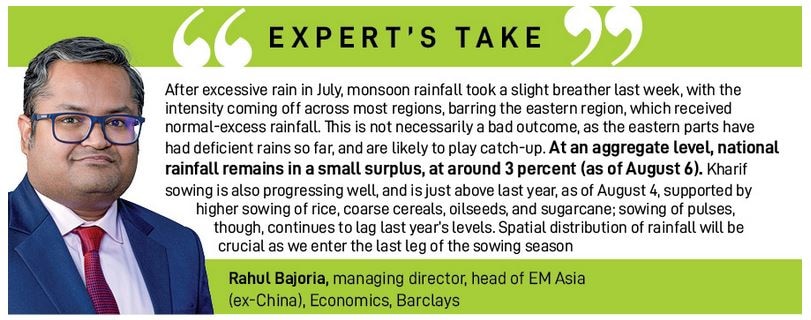
Rain watch for Aug 3-9: Monsoon slows down, pulses sowing still lagging
Weak El Niño conditions are currently over the equatorial Pacific region, and are likely to further intensify and continue up to early next year. The increase in reservoir levels over the past few weeks seems to be following the 2021 pattern
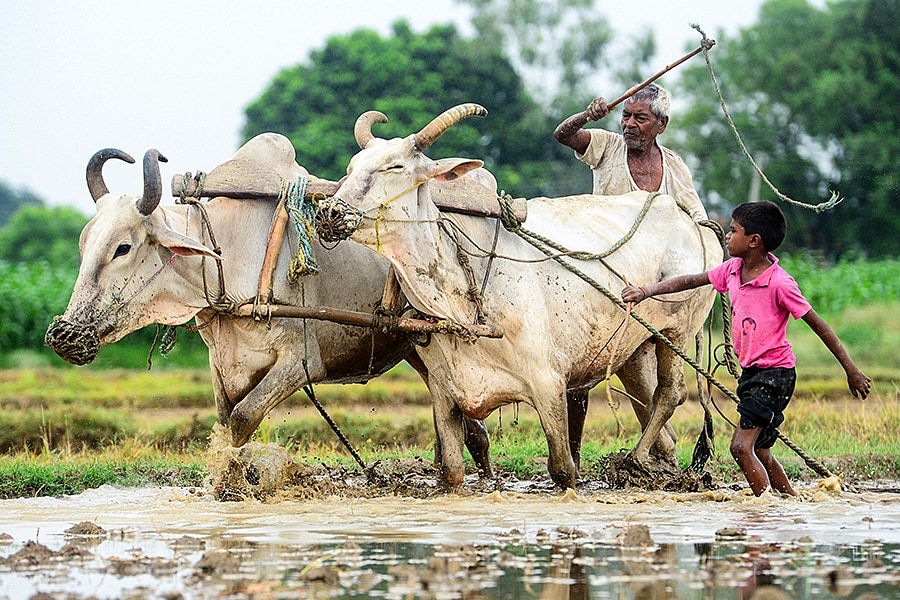 Sowing of pulses is lagging, at 11 percent below last year’s level, delayed by patchy monsoon rainfall in producer states Maharashtra and Karnataka in July.
Image: Sanjay Kanojia/AFP
Sowing of pulses is lagging, at 11 percent below last year’s level, delayed by patchy monsoon rainfall in producer states Maharashtra and Karnataka in July.
Image: Sanjay Kanojia/AFP
After excess rain in July, monsoon rains slowed down in the past week, even as cumulatively rainfall remained in surplus, at around 3 percent above the long period average (LPA). The period under consideration is till August 6.
While rainfall distribution continues to improve across most regions, deficit in the eastern region persists at more than 20 percent, according to an analysis by Barclays based on Indian Meteorological Department (IMD) data. Excessive rains have reduced in the north and northwestern regions, while the southern and central regions are seeing ‘normal’ rainfall.
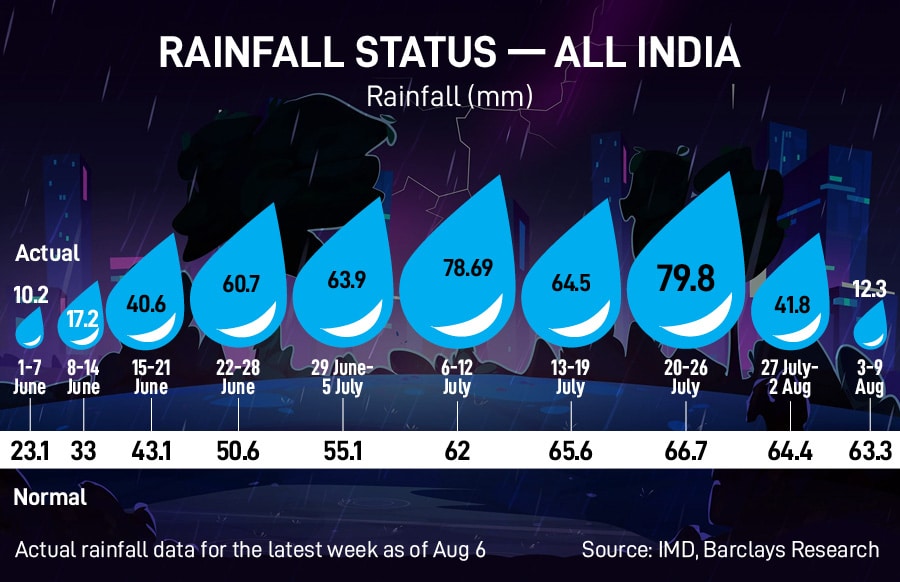 Infographics: Kapil Kashyap
Infographics: Kapil Kashyap
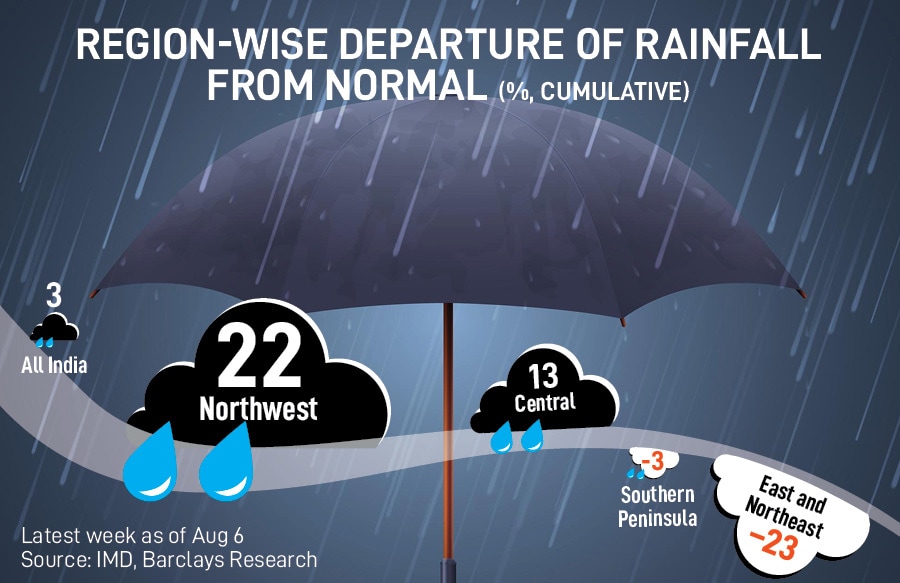
For the second half of the monsoon season from August till September, IMD has forecast normal rainfall overall and likely at the lower end of the band (of 96 to 104 percent of LPA) , with ‘below normal’ rainfall in August. The average rainfall over the country as a whole in August is very likely to be below normal or less than 94 percent of LPA, says IMD.
